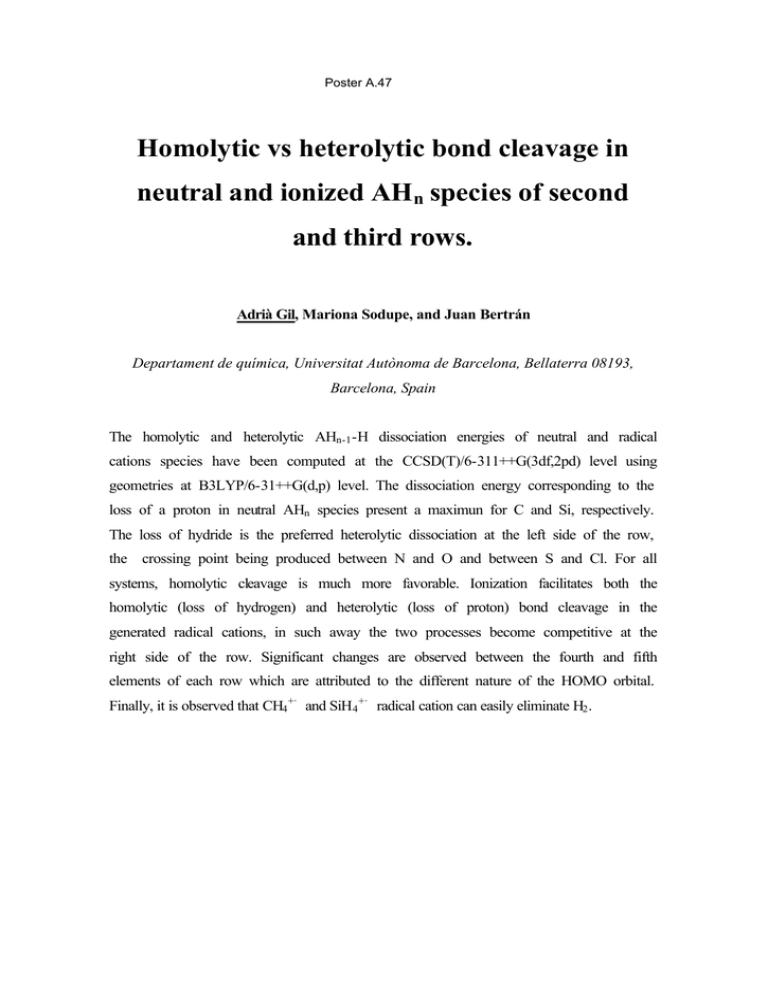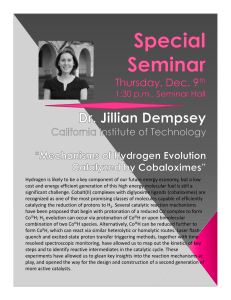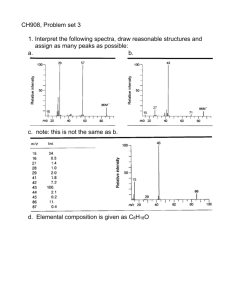Homolytic vs heterolytic bond cleavage in neutral and ionized AH
advertisement

Poster A.47 Homolytic vs heterolytic bond cleavage in neutral and ionized AHn species of second and third rows. Adrià Gil, Mariona Sodupe, and Juan Bertrán Departament de química, Universitat Autònoma de Barcelona, Bellaterra 08193, Barcelona, Spain The homolytic and heterolytic AHn-1 -H dissociation energies of neutral and radical cations species have been computed at the CCSD(T)/6-311++G(3df,2pd) level using geometries at B3LYP/6-31++G(d,p) level. The dissociation energy corresponding to the loss of a proton in neutral AHn species present a maximun for C and Si, respectively. The loss of hydride is the preferred heterolytic dissociation at the left side of the row, the crossing point being produced between N and O and between S and Cl. For all systems, homolytic cleavage is much more favorable. Ionization facilitates both the homolytic (loss of hydrogen) and heterolytic (loss of proton) bond cleavage in the generated radical cations, in such away the two processes become competitive at the right side of the row. Significant changes are observed between the fourth and fifth elements of each row which are attributed to the different nature of the HOMO orbital. Finally, it is observed that CH4 +· and SiH4 +· radical cation can easily eliminate H2 .






